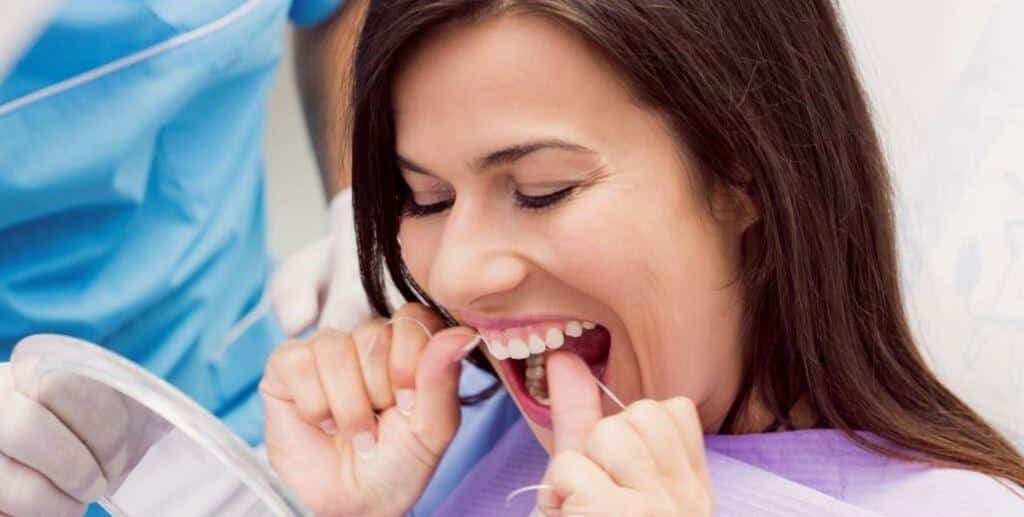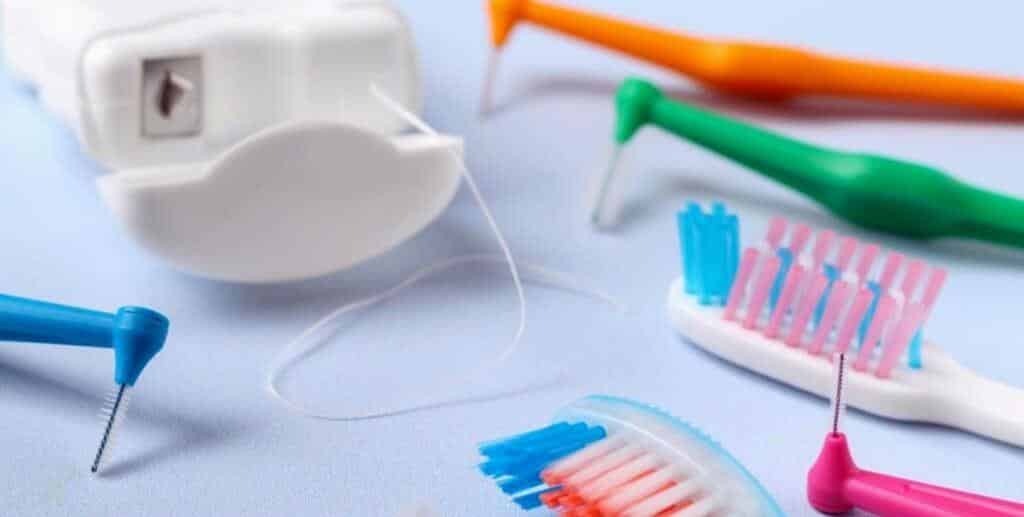Still the majority of Poles do not rivet their teeth. According to a report prepared by the Periodontitis Treatment and Prevention Centre, only 16% of those surveyed do it every day. If you are not in this group, you have to reckon with the consequences - gum disease, which can even lead to tooth loss. That's why it's so important to floss every day, but it's not enough - you also need the right technique. So how do you floss your teeth?
Why do you need to floss your teeth?
Before we get into the techniques, let us explain why you should actually floss your teeth. We've mentioned that by doing so, you'll counteract gum disease - it's also worth mentioning that regular flossing will also prevent tooth decay from developing. With a toothbrush alone, it will be difficult for you to remove food debris from between your teeth, or plaque below the gum line. Carious bacteria can quickly develop in these areas.
By flossing you remove plaque, which over time turns into will turn into tartar. This one can even lead to periodontitis! You can read more about this in the article "Tartar on teeth - find out how it affects your health".
Why is parodontosis so dangerous? Because if left untreated, it can cause tooth loosening and, consequently, tooth loss. Here, too, the statistics are not good, with as many as 70% Poles struggling with this disease and it is affecting younger and younger people. You can read more about what periodontitis is, how to treat it and how to prevent it here. HERE.
Its first signs are bleeding gumsSo don't underestimate it and if you see blood on your toothbrush make an appointment to see your dentist.

Flossing step by step
You have to apply yourself to flossing - this is the only way it will be effective. How do I floss my teeth? It is not complicated! Start flossing by taking about 40-50 cm of floss and wrapping it around your index fingers. You also need to stretch it - use your thumbs for this.
Then place the floss between the teeth and rest it against the tooth wall. What next? With a decisive movement, pull out the floss by running it over the tooth. Rewind the used piece - and continue! Floss each interdental space twice, thus cleaning the tooth on the right and left side. Always use a clean piece of floss.
Remember the part of the teeth under the gum line, but be careful to traumatise the gum tissue.
There is another good answer to the question "how to floss" - regularly! Don't skip this activity. Let it become your habit in the same way as daily brushing, i.e. a minimum of twice a day.
It is worth mentioning to ensure that children too take proper care of their teeth from an early age and develop the habit of flossing. We realise that they do not always feel like doing this, so we recommend you our text "10 ways to encourage your child to brush their teeth". See which way works best for you!

What types of floss are there?
Flossing can be a pleasure - help yourself with the right product! There are non-waxed dental flosses (they are more resistant to damage) - we recommend them for patients whose teeth are very close together. It is also worth trying out dental tapes, which are wider than standard floss.
If your teeth are not tightly aligned, you can opt for waxed floss. It is worth noting the threads of fluorineThe latter will help you fight discolouration in the interdental spaces. The latter will help you fight discolouration near the interdental spaces.
An alternative to flossing
Sometimes, flossing may not be an option for various reasons. You don't like flossing? Do you find it difficult and don't know what to do? Don't worry - plenty of alternatives have been invented for this activity.
Among other things, you can use an irrigator to rinse your mouth or a special toothbrush to clean the interdental crevices. Floss toothpicks, flossers are also available on the market.
IMPORTANT: Even if you brush your teeth regularly and you floss, you should make an appointment at least once every six months for hygiene. You can find out what it is, what treatments it consists of and how much it costs in our article "Dental hygiene in the UK - scaling, tooth sandblasting, polishing and fluoridation".
As you can see, taking care of your oral hygiene is easier than you think. Remember - if you're looking for a dentist in the UK, we recommend our clinic. We will take care of your smile in a friendly atmosphere! We'll also be happy to show you how to floss your teeth if needed.
Do you know you need to undertake treatment but are worried about the cost? A reminder about the possibility of instalments. The first 12 have zero interest! Our instalment system is completely secure and, most importantly, regulated by the Financial Conduct Authority (FCA number 619628). You are welcome to contact.

